Research and Multifaceted Uses of Materials: "National Center for Art Research International Symposium and Workshop 2023" Report #4
From left: Hiroki Yamamoto, Justin Jesty, Yuko Kikuchi, Jung-Young Ma, Kouta Takeuchi Photo: Ken Sengoku (.new)
The National Center for Art Research (NCAR), which aims to be a new hub for promoting art in Japan with the mission of "Connecting, Deepening, and Expanding the Art," held the "National Center for Art Research International Symposium 2023—Museum and Research: What does it mean to 'deepen' art?" at the National Art Center (Nogizaka, Tokyo) on March 22, 2024.
Four workshop sessions featuring curators, artists, and experts were held from March 21 to March 22 prior to the symposium. Given the multifaceted concept of art research, what methods and resources do we have at our disposal? "Session 4: Multifaceted Uses of Materials" focused on the theme of "research" as an essential part of art practice. Researchers, curators, and artists working in universities and museums discussed the subject from different perspectives.
◎ Panelists:
Justin Jesty (Associate Professor, University of Washington)
Yuko Kikuchi (Head of Academic Programmes, Victoria and Albert Museum)
Jung-Yeon Ma (Associate Professor, Kansai University / Guest Curator, National Museum of Art, Osaka)
Kota Takeuchi (Artist)
◎ Moderator:
Hiroki Yamamoto (Associate Professor, Department of Aesthetics and Art History, Jissen Women's University)
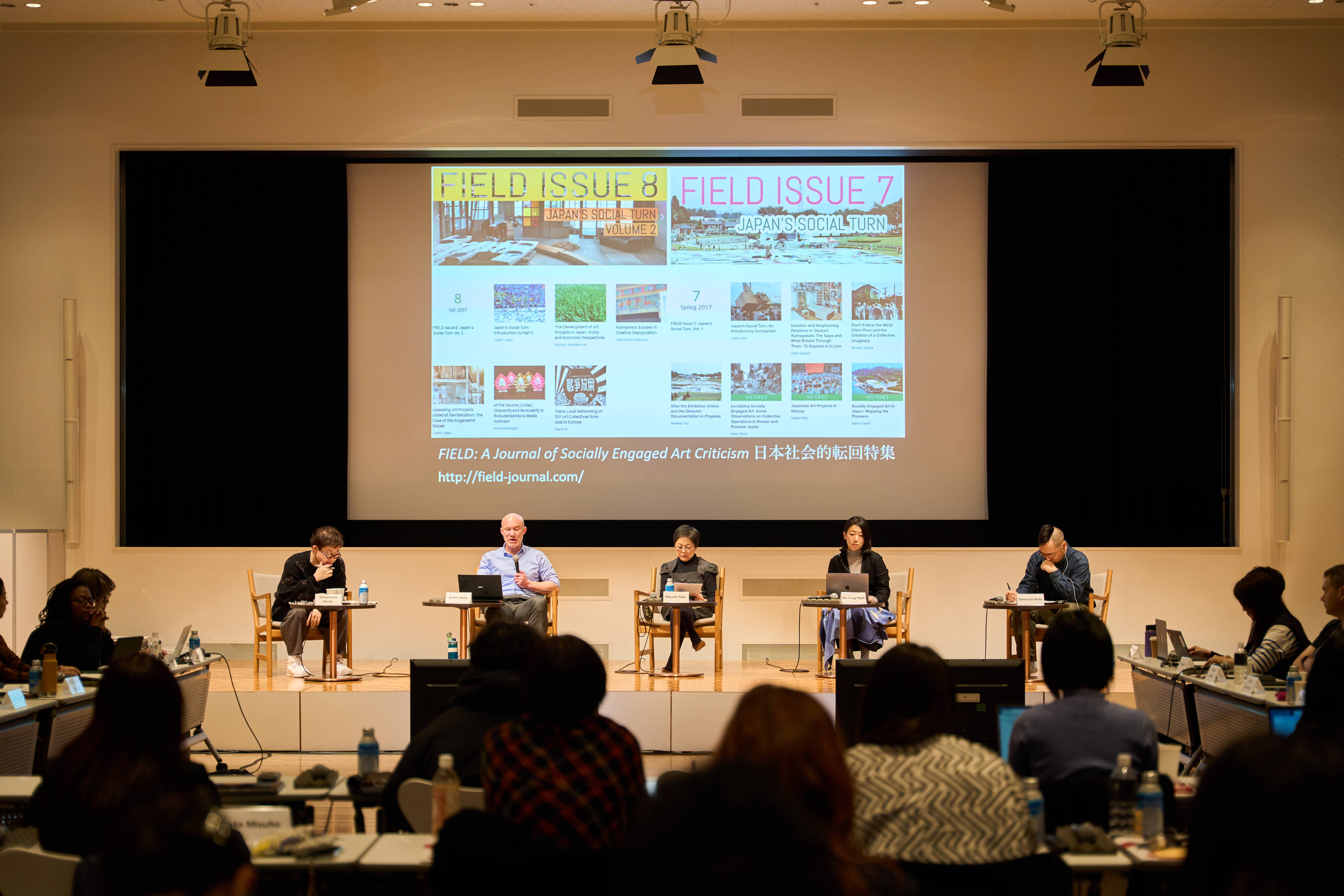
Justin Jesty: Artists' homes and "Cocoroom" practice
Justin Jesty explores the relationship between social movements and artistic expression in post-war Japan. In particular, he is focused on post-war avant-garde and contemporary art, much of which is outside the museum framework. Jesty argued that museums, archives, libraries, schools, and other institutions are currently transitioning, and he cannot predict what they will look like 50 or 100 years from now.
During his research, Jesty realized that one of the best ways to research artists is to "visit their homes."
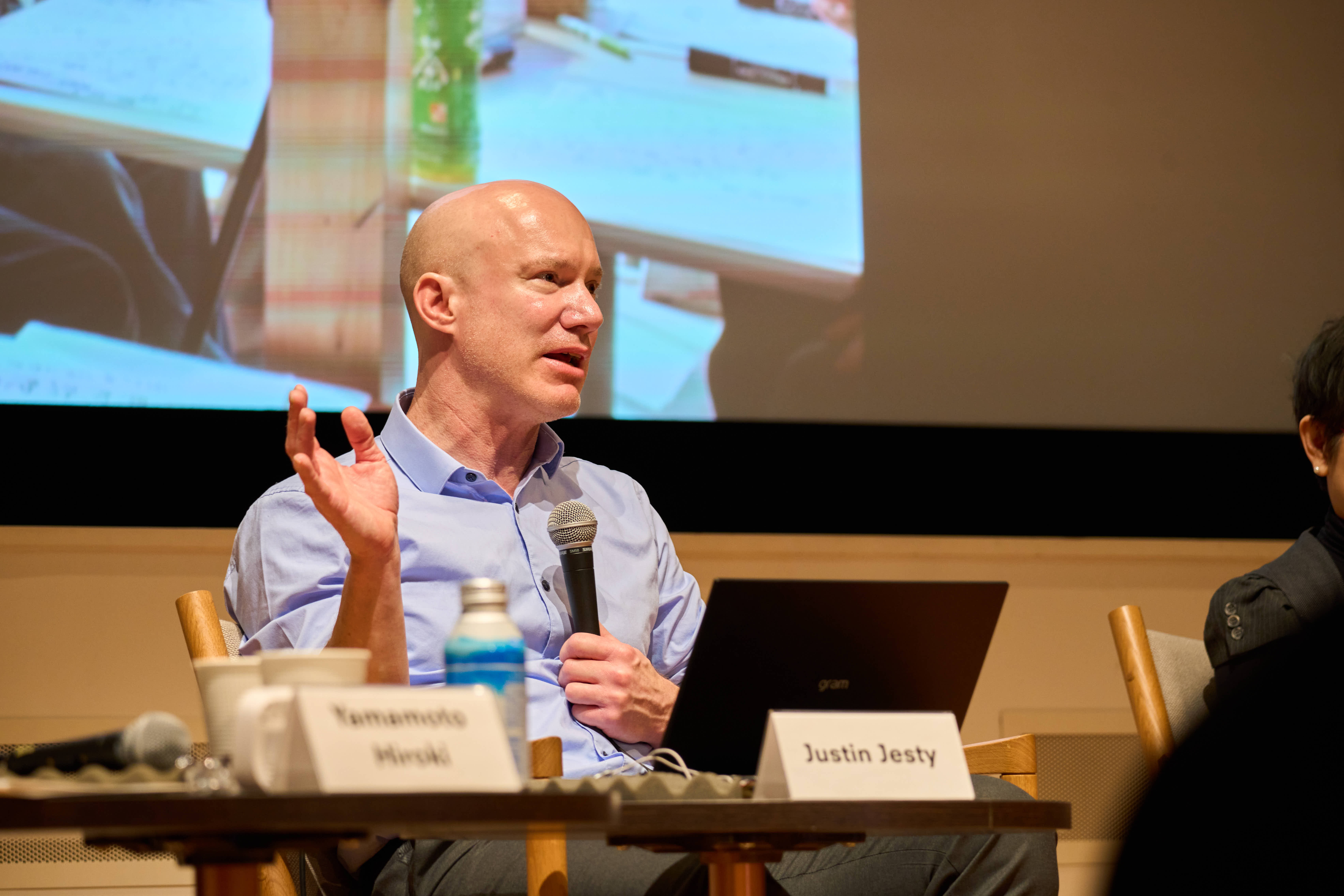
Jesty continued, "At home, you can see a structure that could be described as an artist's universe. Family, friends, and community intimately care for things, and this comes from love, respect, and responsibility for the past and future. This is the root of the archive."
As a positive example, he introduced the archive of conceptual artist Yutaka Matsuzawa, based in Shimosuwa, Nagano Prefecture.
Jesty also introduced a cafe run by the art NPO "Cocoroom" in Kamagasaki, Nishinari-ku, Osaka, founded by the poet Kanayo Ueda. In this community-based café, expression is created through conversations and interactions among visitors. As contemporary artistic activities are increasingly engaged with society and the concept of art expands, how should traditional museums and archives embrace it? Jesty suggested that they should work directly with the community, asking for ideas on what to preserve and how to preserve it and integrate with the community openly and transparently.
Yuko Kikuchi: Traditional crafts research from feminist and transnational perspectives
Yuko Kikuchi has a background in design history and has studied "kogei" (traditional arts and crafts) as a subject of visual culture criticism. In particular, she emphasized that her longstanding research on Japanese folk art revealed issues of demodernization and decolonization, which developed into social and historical criticism and became the basis of her work today.
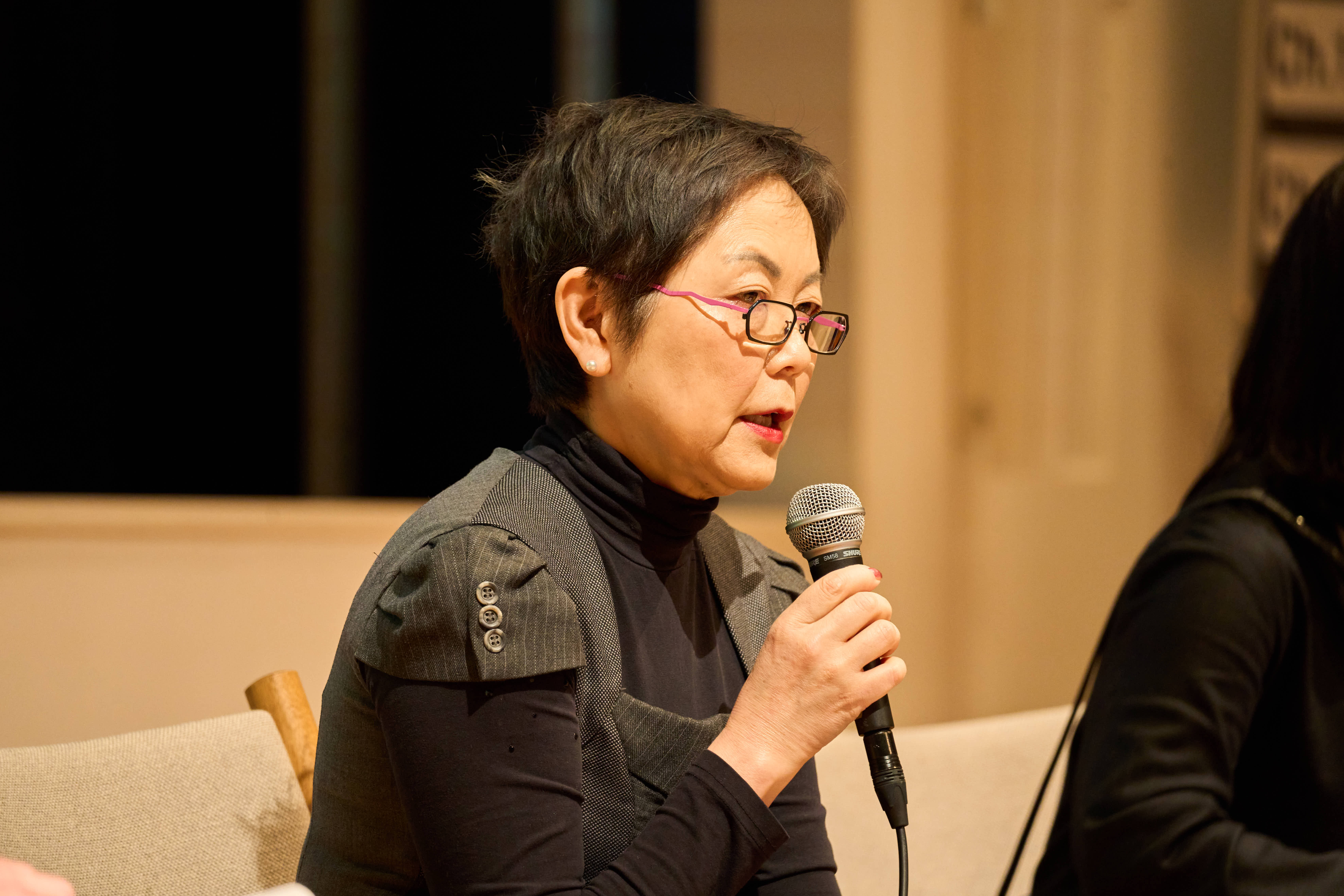
Kikuchi is the Head of Academic Programmes at the Victoria and Albert Museum (V&A), whose collection includes over 2.8 million objects, books, and archival material relating to craft and design from across the world, collected during the Great Exhibition in London in 1851. However, as society continues to change, a reconsideration of the origins of the field, different domains, the way the world is divided into regions, and the way terminology is used has become problematic.
"By following its vision of becoming contemporary and promoting research in line with it, the museum is expected to contribute new knowledge to the interpretation and curation of the collection, as well as to future acquisition and conservation policies." As a result, research, collections, and exhibitions on feminist, gender, Black, African, and Caribbean cultures are rapidly increasing.
Kikuchi concluded: "Attempting to critique and improve contemporary society and culture will ultimately contribute to realizing a sustainable society. This is what I would like to pursue in the future."
Jung-Yeon Ma: Hiroshi Kawano and Seiko Mikami Archives
The next presenter is Jung-Yeon Ma. Born in Seoul, Ma received her Ph.D. from the Graduate School of Film and New Media, Tokyo University of the Arts. She is currently based in Osaka, where she conducts research at the university and at the museums.
As the author of A Critical History of Media Art in Japan, Ma is familiar with the various problems associated with archives, such as the difficulties in accessing materials despite requests from overseas. "Going to see people" has been a powerful tool in her research. She recalls, "There are things that I would never have found if I had only worked on researching documents and materials."
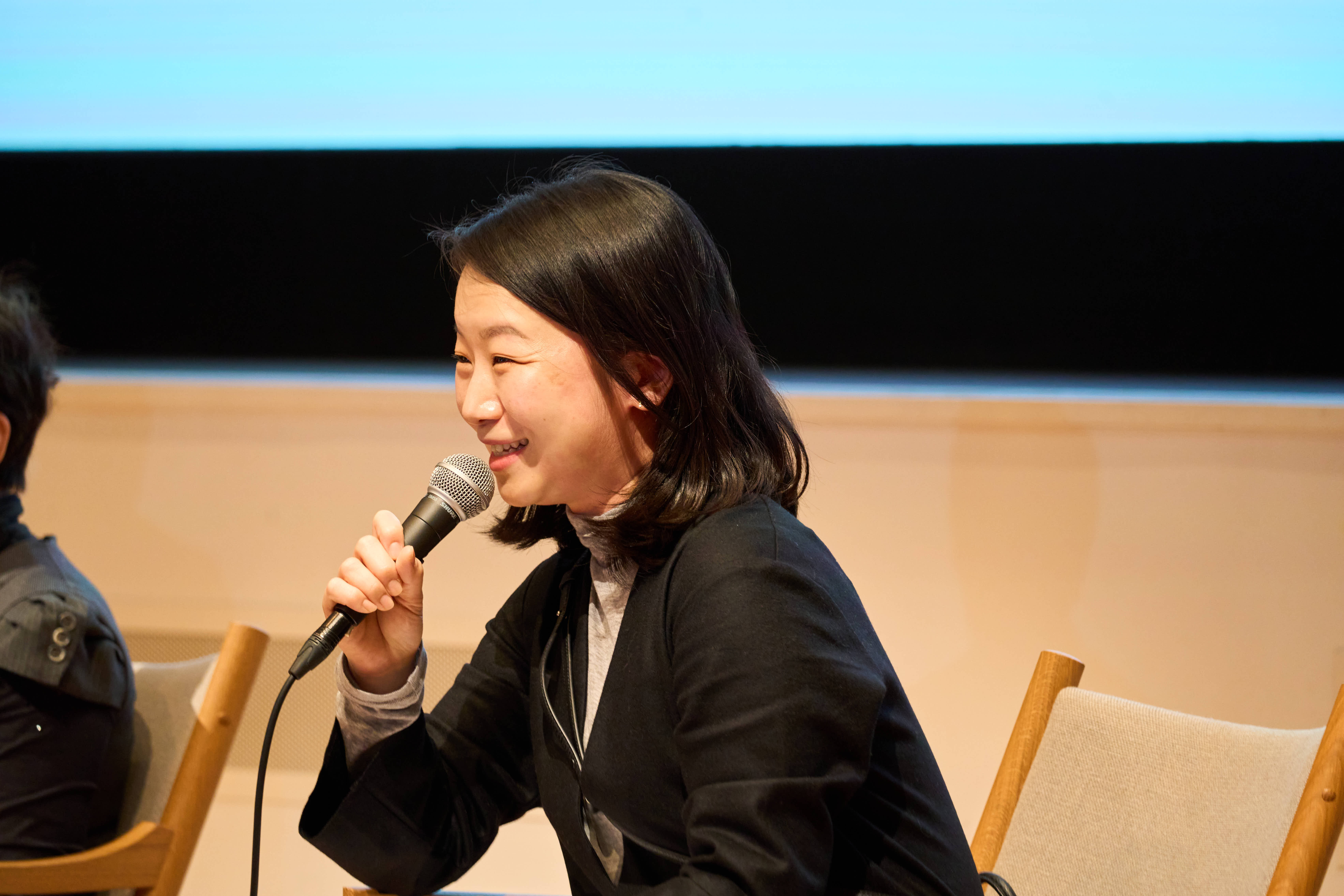
Ma also introduced her experience in building artists' archives, including Hiroshi Kawano, a philosopher and pioneer of computer-generated art. She described the process of building Kawano's archive at the Center for Art and Media (ZKM) in Germany and assisting in the preparation of the retrospective exhibition Hiroshi Kawano. Der Philosoph am Computer (2011-2012), and how a portfolio that was entrusted to her by Kawano after the retrospective was acquired by the Tokyo Photographic Art Museum.
Ma also worked on the archive of artist Seiko Mikami, who passed away in 2015, after the artist's retrospective exhibition. "It was a beautiful collaboration," she recalls, with the materials being sorted at the Tama Art University Art Archives Center and the works being restored at the Yamaguchi Center for Arts and Media [YCAM]. In addition, when Ma co-edited Seiko Mikami: A Critical Reader (2019) with Tomoya Watanabe, a reader entrusted her with Mikami's work on the theme of migration and infection, followed by a three-day exhibition in the midst of the pandemic. Through the efforts of many people, the work and other related works were subsequently acquired by the Museum of Contemporary Art Tokyo.
Based on her experiences and reflections on handling archives and death, Ma concluded that she wanted to start working on archives while she was still able to "go to see" the artists. She is now focusing on helping her generation of artists with research and creating records.
Kota Takeuchi: Creating art through research
The final panelist is the artist Kota Takeuchi, who relocated to the coast of Fukushima Prefecture after the Great East Japan Earthquake and Fukushima Daiichi Accident. By carefully researching recorded and remembered things, Takeuchi creates works that explore the relationship between media, technology, people, and the public nature of such matters.
Takeuchi explains: "To be precise, I think I am a researcher-tracer, not a researcher. I follow the traces of someone in the past and try to match my perspective with theirs. And, perhaps shamelessly, I consider it a performance in the broad sense of the word."
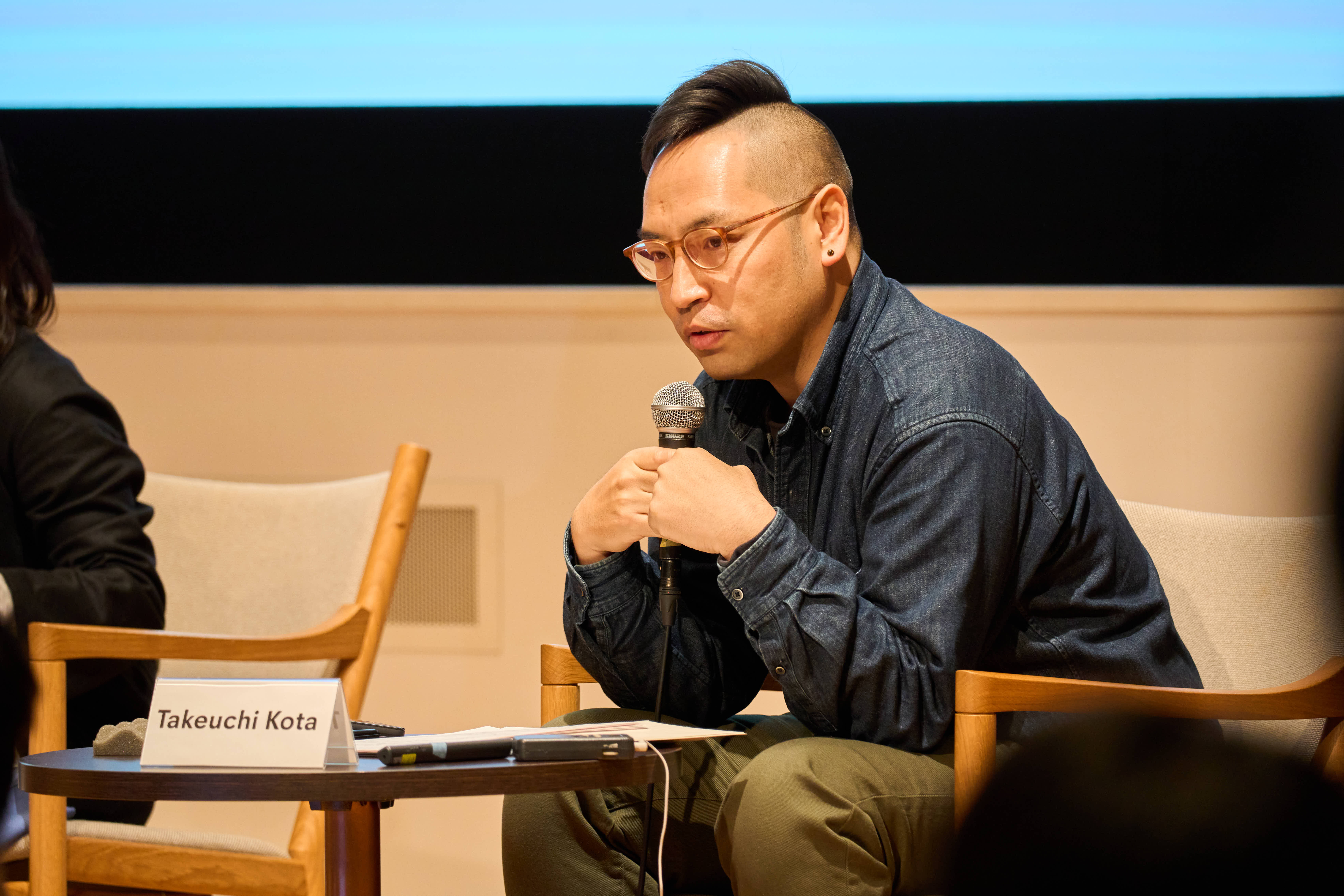
In recent years, Takeuchi has been working on a series of works examining the "balloon bomb," a weapon developed by Japan during World War II to attack the United States mainland. In his vision, this weapon, which was developed over 70 years ago, was one of the starting points for autonomous weapons. Research resources seemed to be limited as the Japanese military had destroyed all official documents by the end of the war. However, Takeuchi visited the United States, and by following the advice of local researchers, he was able to locate U.S. military records stored in the State Archives.
The theme of the work, "Blindness," was born out of research into the specific subject matter of the balloon bomb: "Technology occasionally uses blindness as an excuse after attacking people. For example, remote attacks sacrifice innocent civilians in order to kill terrorists. On the other hand, there are also people who seek the truth beyond blindness. These are people trying to find out where the bombs are flying. The work was designed to build on the two aspects of blindness: violence and knowledge."
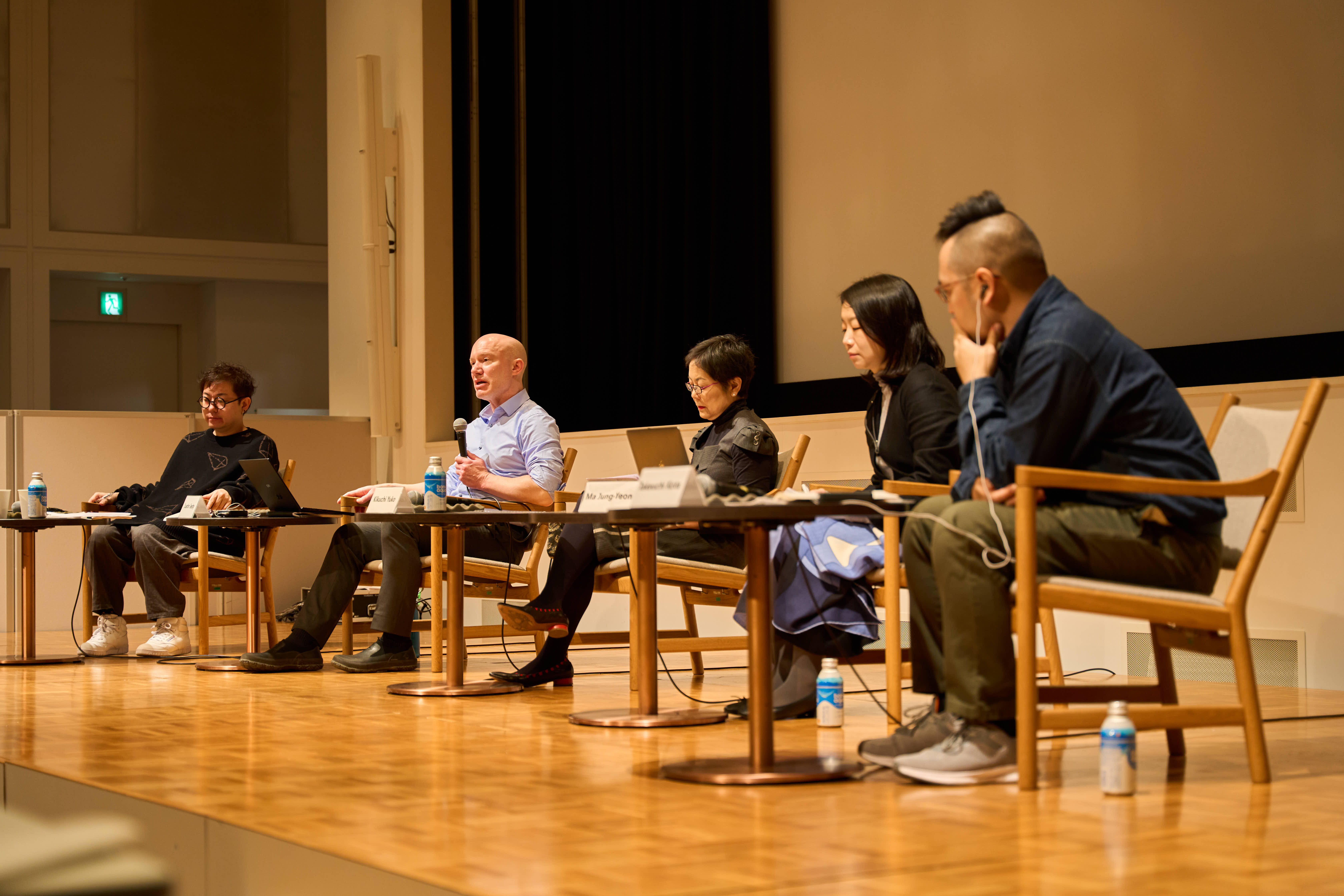
Discussion: Verbal/non-verbal in research and archives
Moderator Hiroki Yamamoto concluded the session by saying that the panelists' presentations made him think simultaneously about the non-verbal possibilities of artists' practices and the importance of the verbal stage in triggering those possibilities: "The question is who draws the line between the two, and by what criteria."
In response, Takeuchi, who considers gestures and facial expressions to be verbal in the broad sense of the word, recounted the experience of being approached at his show by a person who had been interviewed by an art project member as a child in Fukushima. As an adult now, the person shared the experience of struggling, with tears in their eyes, to talk about the uneasiness they felt at the time through the "unspoken words." He concluded, "I think there are words conveyed through artworks and materials created by someone, and it is important to acknowledge their imperfection and still seek to record them."
How does research grow organically? Drawing on examples from each panelist's personal experience, this session encouraged participants to reflect on how we can connect the continuously generated creative resources to the future.
Find more articles on the "NCAR International Symposium and Workshop 2023":



